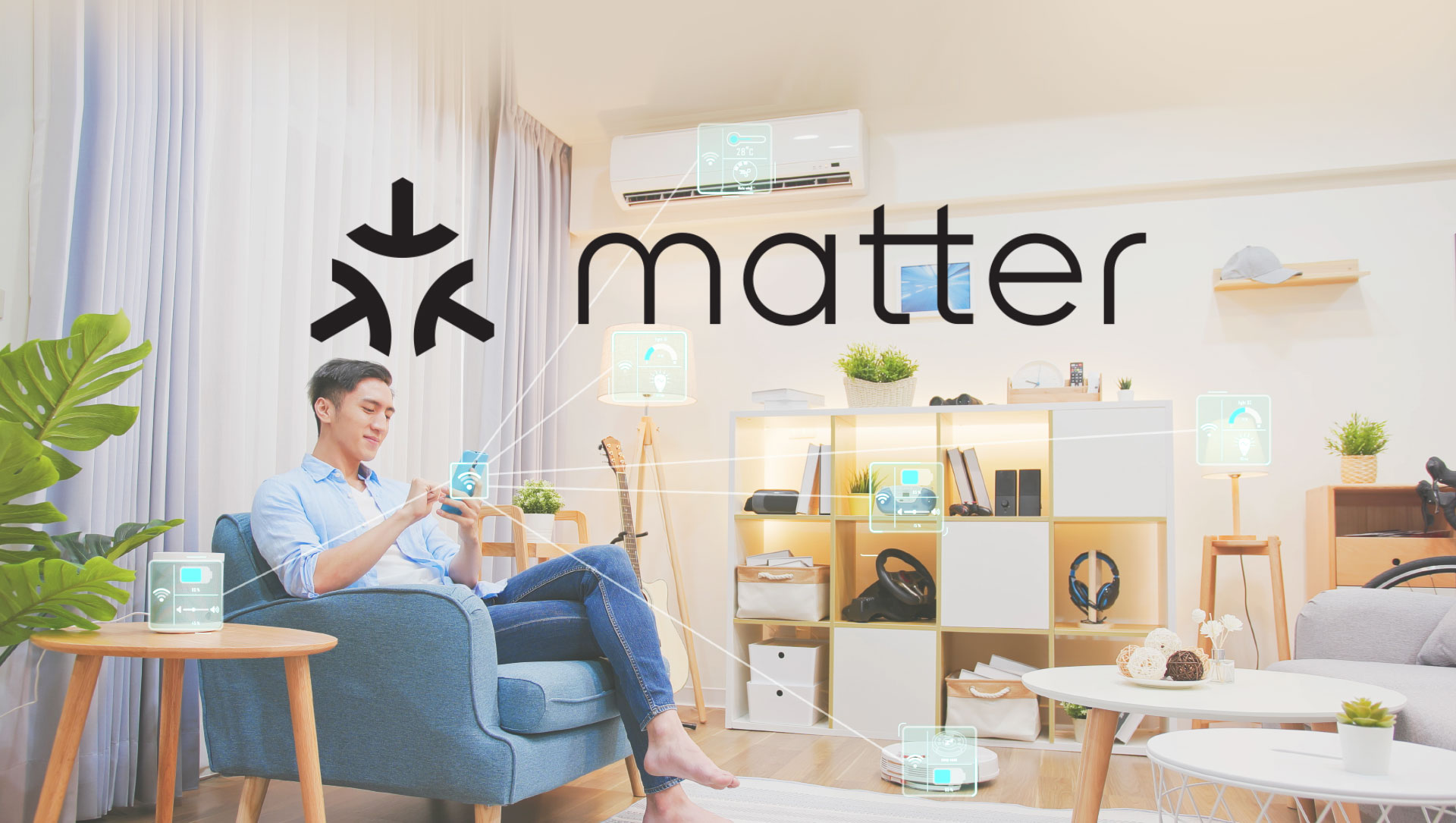Connecting homes
with matter
Smart homes are not just the stuff of dreams anymore, nor are they a luxury reserved for the wealthy. Multiple homes across the planet today have already become smarter statistics show the smart home penetration rate is high – for example more than 130 million households globally having at least one smart speaker.
Creating a smart home environment seemingly sounds simple. All you need to do is pick a smart home ecosystem from major brands like Amazon Alexa, Google Home, Apple HomeKit, and Samsung SmartThings, or other ecosystem players in the ‘connected homes’ arena. The right ecosystem selection, however, is complex. The right home automation solution is one that can easily and securely integrate with the current smart home setup and devices already in use. All the hardware inside the home needs to interoperate with the other smart device, and there is also a need for specialised apps to manage these devices.
While choosing the right ecosystem, consumers also need to consider the challenges that usually erupt while trying to switch device manufacturers. One-time choices unwarily tend to become long-term commitments.
Effective smart device proliferation also faces challenges from the retailers’ end. They experience high product return rates due to interoperability issues, are forced to store different versions of the same product to match different ecosystems, and need to deliver increasingly complex advice to consumers with the launch of every new product and version.
Developers are in the same boat. They not only have to pick which ecosystem integration to support, but they must also be knowledgeable about different, competing IoT technologies and ecosystems. Over time, their focus is forced to shift from end-user experience to connectivity and compatibility issues.
The birth of matter
When major smart home brands united in support of this new standard in 2019, little did they know that together they would eventually form a worldwide alliance to bring the Matter specification, reference implementations, testing tools, and certification programs to life. The 180 member organisations and 1700 member individuals of the alliance have taken an open-source approach to the development and implementation of this unified connectivity protocol.
a common language for smart home devices to communicate.
Its goal is to simplify everything about the smart home, from purchase to set up to everyday use.
How does matter transform a smart home?
End-users can buy any smart home device without having to download individual apps and can work together on things like automation and routines. Being able to connect smart home devices through one standard dramatically increases consumers’ choices too. Currently, many smart home devices support either Google Assistant, Alexa, or HomeKit — not all three. When all these ecosystems work with one standard, people can base their buying decision solely on the quality and price of the product.
Retailers also benefit from reduced complexity in-store and lesser compatibility issues, thus creating a simplified purchase experience for consumers.
Matter is going to fix your smart home!
A Matter-enabled smart light bulb that works with Apple’s Siri won’t need an iPhone or a separate app to function. The existing smart home gatekeepers will automatically set up devices to interoperate with the end consumers’ existing ecosystem without them having to lift a finger. Google assistant-supported gadgets enabled with the Matter protocol can benefit from this standard too; they will also automatically be able to work with Amazon without any additional setup.
Additionally, a Matter-supported built-in feature in smartphones will integrate the Matter-supported device into the existing network seamlessly, either by simply scanning a QR code or by pressing a single button. The added device will then be ready to work across platforms and multiple voice assistants easily.
For the revolutionary Matter protocol to take effect, and for the world to benefit from smart homes, we need to see a major proliferation of this standard. The way to unify the Matter ecosystem is to get every major stakeholder in the smart home business on the same page — and we are already seeing a high early adoption rate of Matter among leading companies, including our customers, which is a promising start.
Homes getting smarter is just a 'matter' of time





